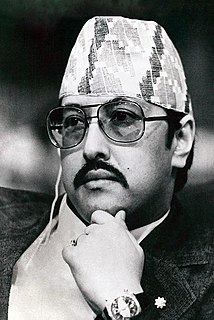 W
WBirendra Bir Bikram Shah was the King of Nepal from 1972 until 2001. The eldest son of King Mahendra, he reigned until his death in the 2001 Nepalese royal massacre.
 W
WAïssatou Boiro was a Guinean civil servant from Koundara. She was assassinated by armed men in Conakry on 9 November 2012. Four of her killers received life sentences in 2019.
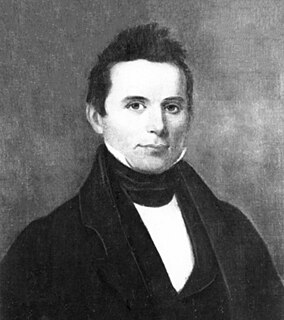 W
WElias Boudinot was a writer, newspaper editor, and leader of the Cherokee Nation. He was a member of a prominent family, and was born and grew up in present-day Georgia. His Cherokee name reportedly means either 'male deer' or 'turkey.' Born to parents of mixed Cherokee and European ancestry and educated at a missionary school in Connecticut, Boudinot became one of several leaders who believed that acculturation was critical to Cherokee survival; he was influential in the period of removal to Indian Territory.
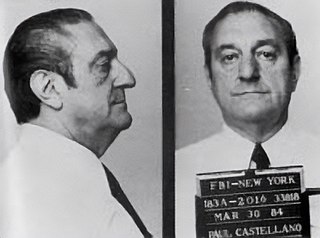 W
WConstantino Paul Castellano, also known as "The Howard Hughes of the Mob" and "Big Paulie", was an American crime boss who succeeded Carlo Gambino as head of the Gambino crime family. Castellano was killed in an unsanctioned assassination on December 16, 1985, ordered by John Gotti, who subsequently became boss.
 W
WSri Chautaria Fatte Jang Shah or Fatya Jang Shah also popularly known as Fatte Jang Chautariya was the 6th Prime Minister of Nepal.
 W
WRustam Haidar was an aide to Emir Faisal who served as the Defense and Finance Ministers of Iraq. He was Minister of Finance from 1930 to 1932 and from 1938 to 1940. A Shiia, he was targeted by other leading politicians for his faith.
 W
WMaximiliano Hernández Martínez was the President of El Salvador from 4 December 1931 to 28 August 1934 in an acting capacity and again in an official capacity from 1 March 1935 until his resignation on 9 May 1944. He was the leader of El Salvador during World War II. While he served as President Arturo Araujo's Vice President and defense minister, a directorate seized power during a palace coup and afterwards named General Hernández Martínez President of El Salvador.
 W
WHis Excellency Commanding General Shree Shree Shree Maharaja Sir Ranaudip Singh Bahadur Kunwar Ranaji, KCSI, commonly known as Ranodip Singh Kunwar was the second Prime Minister of Nepal from the Rana dynasty.
 W
WNajafqulu Khan I was the first khan of the Tabriz Khanate from 1747 to 1784.
 W
WKsenija Pajčin was a Serbian singer, dancer and model popular in Serbia and the other former Yugoslav republics. Sometimes referred to as Xenia or Ksenia, she was known for her sometimes sexually appealing image on stage.
 W
WYitzhak Rabin was an Israeli politician, statesman and general. He was the fifth Prime Minister of Israel, serving two terms in office, 1974–77, and 1992 until his assassination in 1995.
 W
WÓscar Arnulfo Romero y Galdámez was a prelate of the Catholic Church in El Salvador who served as the fourth Archbishop of San Salvador. He spoke out against poverty, social injustice, assassinations, and torture amid a growing war between left-wing and right-wing forces. In 1980, Romero was assassinated while celebrating Mass in the chapel of the Hospital of Divine Providence. Though no one was ever convicted for the crime, investigations by the UN-created Truth Commission for El Salvador concluded that the extreme right-wing politician, founder of ARENA and death squad leader Roberto D'Aubuisson had given the order.
 W
WSa'id ibn Hamdan was an early member of the Hamdanid dynasty who served as provincial governor and military leader under the Abbasid Caliphate. He was the father of the celebrated poet Abu Firas al-Hamdani.
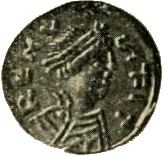 W
WSigebert I was a Frankish king of Austrasia from the death of his father in 561 to his own death. He was the third surviving son out of four of Clotaire I and Ingund. His reign found him mostly occupied with a successful civil war against his half-brother, Chilperic.
 W
WVictoria Leigh Soto was an American teacher who was murdered in the Sandy Hook Elementary School shooting. After the gunman entered the school, Soto hid her students, then the students ran from their hiding places and she died trying to shield and protect them, and has since been hailed as a hero. She is a posthumous recipient of the Presidential Citizens Medal.
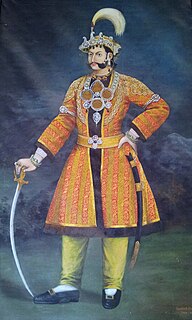 W
WMathabar Singh Thapa listen (help·info), also spelled Mathbar, Mathawar, Mathavar, variantly called Matabar Singh Thapa, was the Prime Minister of Nepal and the Commander-In-Chief of the Nepalese Army from 1843 December 25 – 1845 May 17, until he was murdered by his nephew Jung Bahadur Rana. He was the first Mukhtiyar to title himself as a Prime Minister, as per the British convention. He was the nephew of Bhimsen Thapa, who was falsely sentenced for imprisonment for the death of King Rajendra's six months old son. Mathabar Singh Thapa fled to Shimla after the execution of Bhimsen Thapa, to avoid his own execution as he was Bhimsen's nephew. Four years later, the second queen of Rajendra, Queen Rajya Lakshmi, called him back and installed him as the Mukhtiyar, paving the way for him to eventually title himself as the Prime Minister.. Mathabar Singh, however, enraged the queen by refusing to make her son, Ranendra Bikram, the king. The queen, in turn, had him shot by his own nephew Janga Bahadur Rana and thereby making him the last dynast of the Thapa dynasty.
 W
WRafael Leónidas Trujillo Molina, nicknamed El Jefe, was a Dominican dictator who ruled the Dominican Republic from February 1930 until his assassination in May 1961. He served as president from 1930 to 1938 and again from 1942 to 1952, ruling for the rest of the time as an unelected military strongman under figurehead presidents. His 31 years in power, to Dominicans known as the Trujillo Era, are considered one of the bloodiest eras ever in the Americas, as well as a time of a personality cult, when monuments to Trujillo were in abundance. Trujillo and his regime were responsible for many deaths, including between 5,000 and 67,000 Haitians in the infamous Parsley massacre.